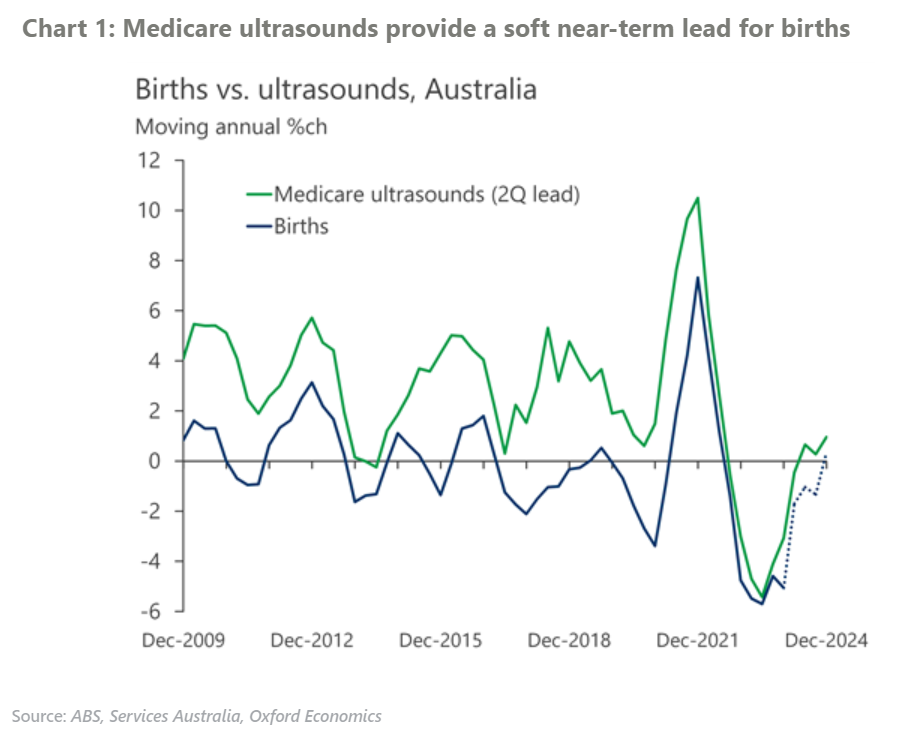Research Briefing
| Oct 31, 2024
Fertility rates in Australia testing new lows
Access the research report to learn more about the key points outlined below:
- Fertility rates have been declining globally over the past few decades, and Australia has followed suit. After a small ‘baby bump’ during the pandemic, fertility rates have now reached new lows across much of the OECD.
- Using Medicare ultrasounds data as a lead indicator, our modelling suggests Australia’s total fertility rate (TFR) came in close to 1.47 for FY2024. A modest pull forward of births over the pandemic and the recent deterioration in housing affordability are likely acting as drags, spurring a decline in births (albeit now flattening). However, we perceive that changing migration volumes and composition are the predominant driver of the recent step down in the TFR, with population growth having been very strong in the key childbearing age group (25-40 years old).
- There is a cyclical overlay to recent movements in the TFR. Any impact from the pull forward will fall out of the numbers, while the stabilisation of temporary migration and higher permanent migration outcomes over the past two years are set to be supportive as we move through mid-decade. Housing affordability is also expected to improve modestly with interest rate cuts next year. With this, a modest gain from the current record low base to a rate of 1.55 is assumed by FY2028 – a level between the medium and lower scenario assumptions in the latest Australian Bureau of Statistics (ABS) population projections.

Tags:
